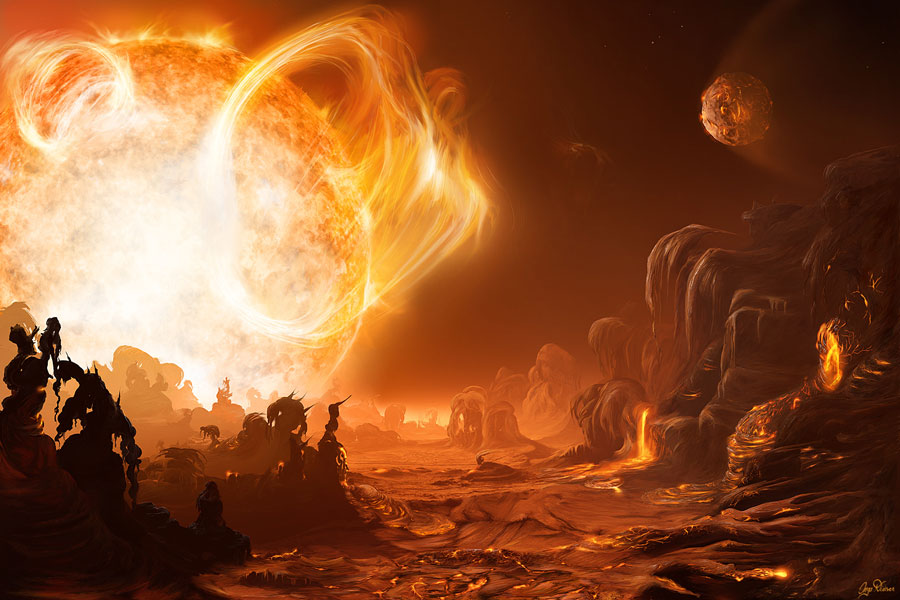Friday, October 1, 2010
Eye Candy: Speaking of Exoplanets- Sunrise on Gliese 876d

In keeping with not only our exopoplanet theme but red dwarfs named "Gliese", the above is an artists depiction of a sunrise on a planet known as Gliese 876d, the third planet discovered orbiting the red dwarf Gliese 876- located fifteen light years away in the constellation of Aquarius. The rest of the text in this article as well as the image, comes directly from NASA's " Astronomy Picture of the Day" website.
-CAINE-
Illustration Credit & Copyright: Inga Nielsen (Hamburg Obs., Gate to Nowhere)
Explanation: On planet Gliese 876d, sunrises might be dangerous. Although nobody really knows what conditions are like on this close-in planet orbiting variable red dwarf star Gliese 876, the above artistic illustration gives one impression. With an orbit well inside Mercury and a mass several times that of Earth, Gliese 876d might rotate so slowly that dramatic differences exist between night and day. Gliese 876d is imagined above showing significant volcanism, possibly caused by gravitational tides flexing and internally heating the planet, and possibly more volatile during the day. The rising red dwarf star shows expected stellar magnetic activity which includes dramatic and violent prominences. In the sky above, a hypothetical moon has its thin atmosphere blown away by the red dwarf's stellar wind. Gliese 876d excites the imagination partly because it is one of the few extrasolar planets known to be close to the habitable zone of its parent star.



That's a brilliant picture. I'm still not a fan of all this "habitable zone" talk though!
ReplyDeleteMeaning? You don't like the inference being made that just because a planet is in a habitable zone it must therefore have biology, or do you object to the notion of there even being a "Habitable zone"?
ReplyDeleteThe latter - Jack Cohen and Ian Stewart have written a great book "Evolving the alien" (also, I think, with the titel "What would a martian look like" in some prints"). I think the "habitable zone" is rather limiting to where life could be. Granted, it would work for life like ours, but if you can get self replicating molecules competing with each other, who's to say it that it needs water, and not, say silicon and ammonia, or even more bizarre things.
ReplyDeleteIt's only a little bug bear - and it is a good hook to get people interested...
I've never read the book you mentioned but I am completely open to the idea of alternative biology. I'm actually still hopeful that we'll find some form, very probably some alternative form of life, in our own solar system on either Titan, Europa, or some other moon. So I think it depends on the purpose of defining a "habitable zone".
ReplyDeleteFrom a purely systematic standpoint, if you're gonna go looking for something the most logical way to start is with what you know, especially if you're looking through an area as vast as the universe, so in that sense I think having a habitable zone makes sense. But I agree that it's possible, if not probable that life exists outside of the area we call biologically friendly.